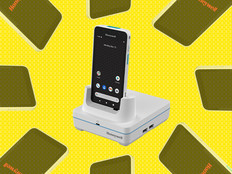Q&A: Samsung’s David Rhew on Empowering Senior Care Through Technology
Due to what’s being coined as the “Silver Tsunami,” the next wave of technology is currently hitting the senior-care marketplace. Today’s seniors expect to be connected residents as they age. Senior living, long-term care and home health staff and caregivers are slowly but surely beginning to realize the benefits of enhanced care collaboration made possible through technology. As interest and adoption continue to grow, we were eager to explore the state of connectedness in senior care as well as what challenges and barriers still limit maximizing technology’s adoption in this exciting space.
For more on this shift, we spoke with Dr. David Rhew, chief medical officer and head of healthcare and fitness at Samsung Electronics America. We discuss the most useful technologies to keep both residents and staff connected, the missing pieces not being considered and what’s ahead with the promise of technology.
HEALTHTECH: Please tell us a little about your background in senior care and healthcare technology.
RHEW: I am a physician, health services researcher and technologist. My passion is developing and deploying technology solutions that improve quality of care, reduce healthcare costs and enable increased access to care. Seniors represent the single most important segment of the population that needs health technology solutions. However, most technology solutions are not geared toward seniors. At Samsung, one of our primary goals is to identify how mobile and home-based technologies can be effectively used by seniors, care providers and staff to improve outcomes.
HEALTHTECH: What are the most useful technologies that can be harnessed for residents?
RHEW: Customized sensors and monitoring devices that are seamlessly integrated into a senior’s lifestyle enable healthcare providers and caregivers to provide seniors with timely information and needed support. However, the key is that the technology needs to be applied in a manner that is engaging and easy to use for the senior. One of seniors’ most important needs is to connect with family and friends. Mobile technologies such as smartphones, tablets and wearables serve as optimal platforms for daily communication as they can be carried and/or worn throughout the day. Digital connectivity to the residence through “smart” TVs, home appliances and home furnishings can then enable a seamless experience throughout the residence.
HEALTHTECH: How are you seeing technology play a growing role in relation to the senior population? What benefits do you see for residents who use technology?
RHEW: The most useful technologies are ones that are streamlined and provide a user-friendly experience to the residents of senior-care locations. The technology needs to be easy to use in order for seniors to adopt it. Self-care, medical alerts, and measurement and monitoring are some of the ways to enhance the lives of seniors with the goal, in most cases, of enabling the senior to maintain his/her independence.
HEALTHTECH: What are the biggest challenges for resident connectivity and collaboration?
RHEW: The biggest barrier to adoption of technologies in the senior space has not been with the technology, but rather in the “one-size-fits-all” approach to deploying technology for seniors. Seniors want to access technology and want to use applications like Facebook, Skype and Google. We just need to make the technology easier for them to do so.
HEALTHTECH: What are the most useful technologies for senior care staff?
RHEW: The most useful technologies are those that can push relevant information back to the staff for early and quick evaluation of issues before they escalate to a level at which the senior requires an [emergency room] ER visit or hospital admission. Smartphones and wearables, when used with personal monitoring devices, can capture patient-generated data that analytics, dashboards and clinical-decision support can use to help senior care staff better and more proactively manage seniors’ health.
HEALTHTECH: How does technology improve clinical collaboration for staff?
RHEW: Mobility solutions provide staff with the ability to communicate efficiently and securely with each other and with residents. Some common use cases include
- Staff-to-staff communication using phones and wearables
- Resident-to-staff communication using tablets (for residents) and phones and wearables (for staff)
- Resident and staff access to medical record information, health information, and video conferencing on phones and tablets
- Screen mirroring from tablets to TVs for in-room collaboration, video conferencing, and sharing of images and medical record information
HEALTHTECH: What are the biggest challenges in harnessing technology for clinical collaboration, both within communities and with healthcare systems and accountable care organizations?
RHEW: The biggest challenges are interoperability of devices and data and the need to make the technology seamless and engaging. Today, many solution vendors are addressing different aspects of senior care. Each solution provides value, but collectively it can be a challenge to ensure that the solutions all work well together and on a common platform. At Samsung, our goal is to help unify senior-care solutions onto a common communications platform. The platform will connect Samsung and non-Samsung devices and create an overall user experience that is easy to use, secure and part of one’s daily lifestyle.






